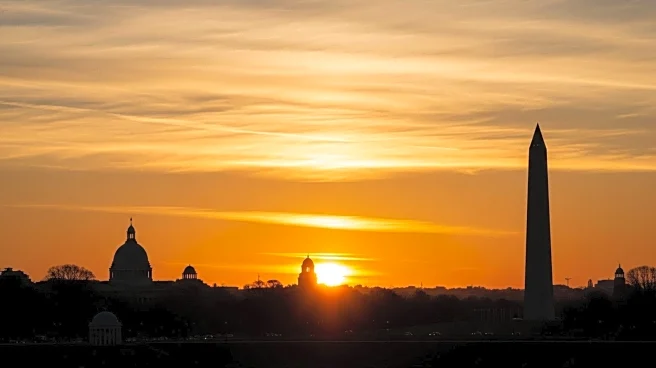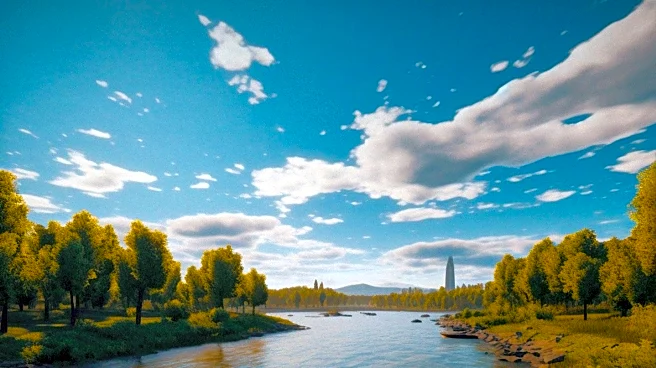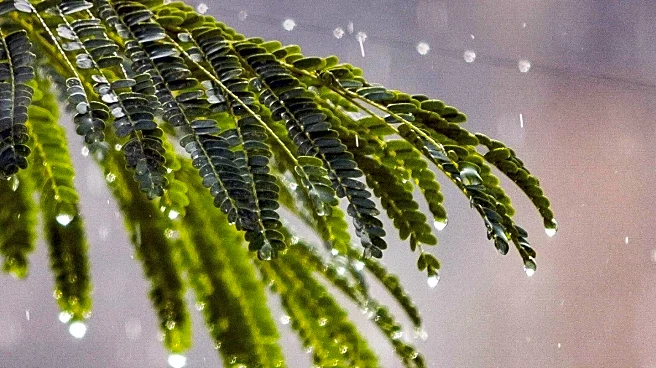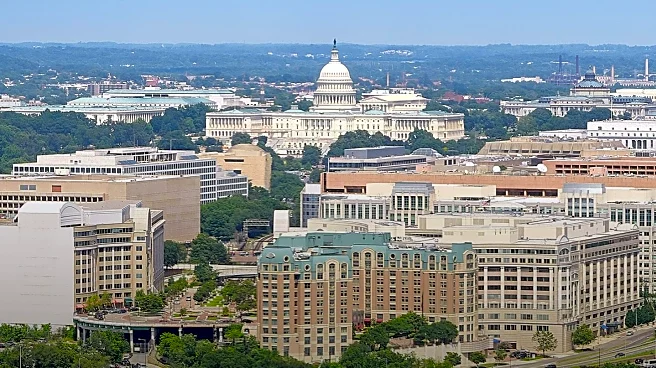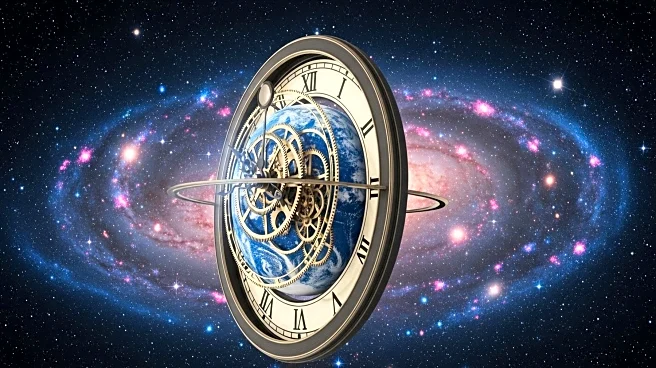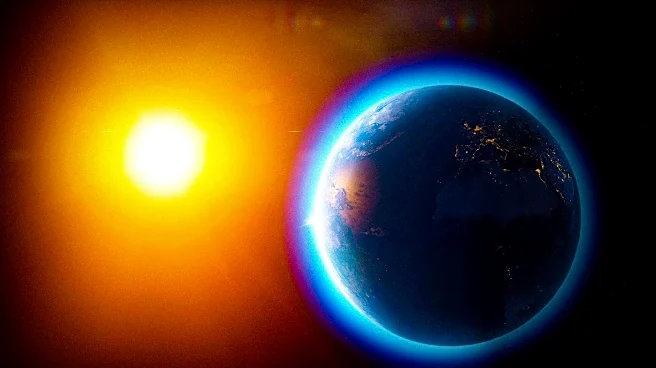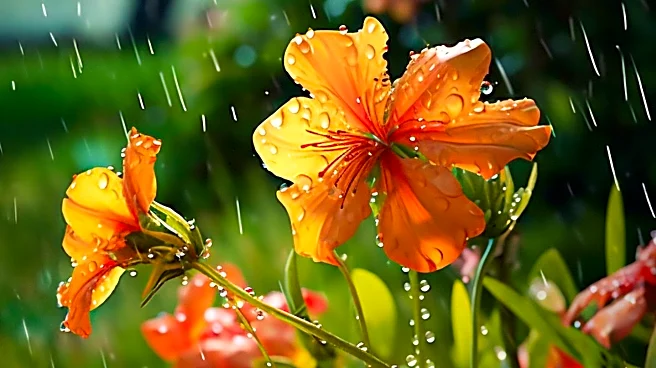What's Happening?
In Washington, D.C., the transition from summer to fall is becoming evident as the autumn equinox approaches. Despite technically remaining summer, the city is experiencing cooler temperatures and diminishing daylight. On Saturday, the high temperature was recorded at 77 degrees, slightly below the normal high of 79 degrees for this time of year. The length of daylight is decreasing at the fastest rate of the year, with daylight exceeding darkness by only a few minutes. Gray clouds have been prevalent, dimming the sunlight and signaling the gradual change in seasons. The autumn equinox, marking the official start of fall, is set to occur on Monday at 2:19 p.m., a moment when Earth's axis tilts neither toward nor away from the sun.
Why It's Important?
The transition from summer to fall in Washington, D.C. is significant as it marks a change in weather patterns that can affect various aspects of daily life and local activities. Cooler temperatures and shorter days can influence energy consumption, outdoor events, and tourism in the area. The shift also impacts local agriculture, as farmers prepare for the fall harvest. Additionally, the change in seasons can affect public mood and health, with some individuals experiencing seasonal affective disorder due to reduced sunlight. Understanding these patterns helps residents and businesses plan accordingly for the upcoming season.
What's Next?
As the autumn equinox occurs, residents and businesses in Washington, D.C. can expect further cooling temperatures and shorter days. This transition may lead to increased heating needs and changes in outdoor activities. Local events may shift to accommodate the cooler weather, and businesses may adjust their offerings to align with seasonal demands. The gradual change in seasons will continue to influence daily life, with potential impacts on transportation, energy usage, and community events. Stakeholders will need to adapt to these changes to ensure smooth operations and maintain public engagement.
Beyond the Headlines
The transition from summer to fall in Washington, D.C. also highlights broader environmental and cultural implications. As daylight diminishes, there is a renewed focus on energy efficiency and sustainable practices to manage increased heating demands. Culturally, the change in seasons is often associated with traditional fall activities and celebrations, such as harvest festivals and Halloween preparations. These events foster community engagement and cultural expression, contributing to the social fabric of the region. The gradual shift in weather patterns serves as a reminder of the interconnectedness of natural cycles and human activities.

